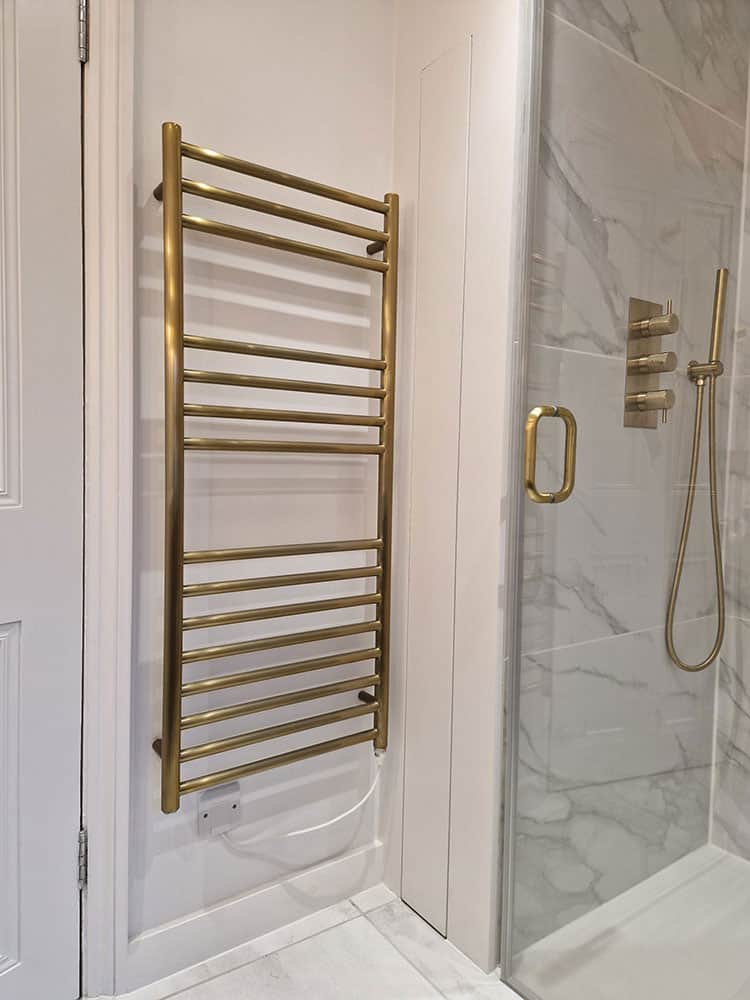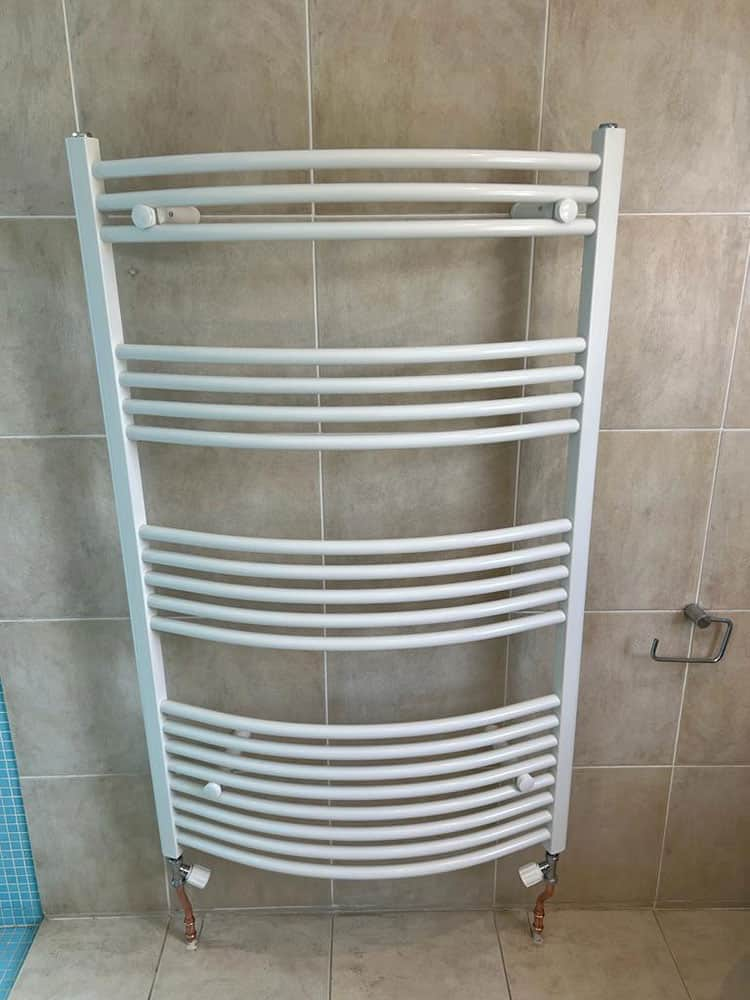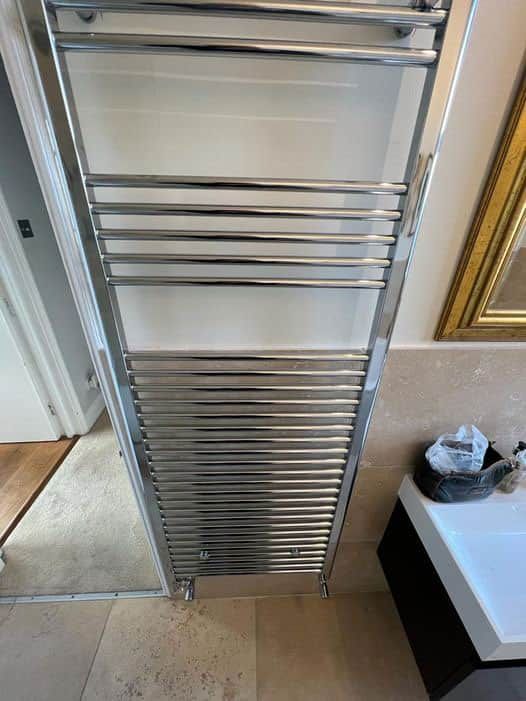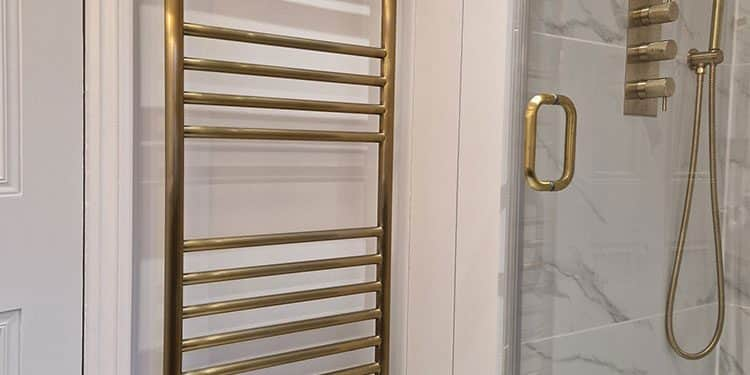A non-heating towel rail radiator can be a real frustration, leaving you with damp, cold towels just when you crave warmth the most. This issue not only makes your bathroom chilly and less inviting but also raises hygiene concerns with perpetually damp towels. Plus, it can hint at bigger problems with your heating system, potentially leading to costly repairs. The disruption to your daily routine and the disappointment of a bathroom not living up to its cosy, functional promise only adds to the aggravation. Like all radiators, towel radiators can run into issues from time to time, but luckily, most are relatively easy to fix.
So, what causes a towel rail radiator to not heat up exactly? And what is the solution? Read on for answers to your questions...
Reasons Your Towel Rail Radiator Is Not Heating Up
A towel rail radiator not heating up can be caused by several issues. Here are some common reasons:
- Trapped air: Air can get trapped in the radiator, preventing hot water from circulating properly. Bleeding the radiator can release this trapped air.
- Closed valves: The valves at each end of the radiator may be closed or partially closed, restricting the flow of hot water. There should be two; one going in (the thermostatic radiator valve) and one heading out (lockshield valve). Ensure both are fully open.
- Thermostatic valve Issues: If the radiator has a thermostatic radiator valve (TRV), it might be stuck or malfunctioning, preventing hot water from entering the radiator.
- System pressure: Low pressure in the central heating system can prevent radiators from heating up properly. Check the pressure gauge on your boiler and top up if necessary.
- Sludge or debris: Over time, sludge or debris can build up inside the radiator, obstructing the flow of water. Powerflushing the system can help remove these blockages.
- Pump issues: A malfunctioning central heating pump might not be circulating water effectively throughout the system, affecting the heating performance of radiators.
- Balancing issues: The heating system might need balancing. If some radiators heat up and others don't, adjusting the lockshield valves can ensure an even distribution of hot water.
- Thermostat settings: The room thermostat might be set too low, or there may be an issue with the thermostat itself, preventing the boiler from firing up and heating the system.
- Electrical problems: For electric towel rail radiators, ensure there is power to the unit and that the heating element is functioning correctly.
- Installation issues: Incorrect installation can result in poor heating performance. This might include improper pipe connections or inadequate sizing for the space.
To diagnose the issue, you can start with the simplest checks (e.g. ensuring valves are open and bleeding the radiator) and move on to more complex causes if the problem persists. If you are unsure or uncomfortable performing these checks, it is advisable to contact a qualified heating engineer.
How Can I Fix A Cold Bathroom Towel Rail
A heating engineer would follow a systematic approach to fix a cold bathroom towel rail radiator. Here is how a Maintracts Services heating engineer would typically proceed:
- Initial inspection: They would start by inspecting the towel rail radiator and its valves to ensure they are open and functional.
- Bleeding the radiator: If air is trapped inside the radiator, the engineer would bleed it using a radiator key to release the air and allow hot water to circulate properly.
- Checking the Thermostatic Radiator Valve (TRV): The engineer would examine the TRV, if present, to ensure it isn't stuck or faulty. If it is, they might clean, lubricate, or replace it.
- System pressure check: They would check the central heating system's pressure, as low pressure can prevent radiators from heating up. If necessary, they would top up the pressure.
- Flushing the system: If sludge or debris is suspected to be blocking the radiator, the engineer might perform a flush to clear the system and restore proper water flow. There are three types of flush that the engineer may perform depending on the age and type of your system and pipework: Chemical, manual or powerflush. Chemical flushing involves using expert cleaning agents to dissolve sludge and debris, while manual flushing requires physically draining and flushing out the system with a hose. Powerflushing a high-pressure method typically combined with the use of a corrosion inhibitor.
- Pump inspection: The central heating pump would be inspected to ensure it is working correctly and circulating water efficiently.
- Balancing the system: If some radiators heat up while others don't, the engineer might balance the system by adjusting the lockshield valves to ensure an even distribution of hot water.
- Electrical check (for electric towel rails): For electric towel rail radiators, the engineer would ensure there is power to the unit and that the heating element is functioning correctly.
- Thermostat settings: They would verify that the room thermostat is set correctly and is functioning properly to trigger the boiler and heating system.
- Installation review: Finally, the engineer might review the installation for any potential issues such as improper pipe connections or inadequate sizing.
By systematically addressing these potential issues, a heating engineer can diagnose and fix the problem, restoring warmth and functionality to the towel rail radiator as quickly as possible.
If your towel rail is letting you down in the warmth department, our team will be happy to solve the issue, like this recent successful fix on a faulty heating element:

If you are looking to upgrade your bathroom by installing a brand-new towel radiator, you know who to call. Here are some recent examples of towel rail installations, complete with expertly fitted valves:


Contact us at your convenience, and we’ll do the rest!

